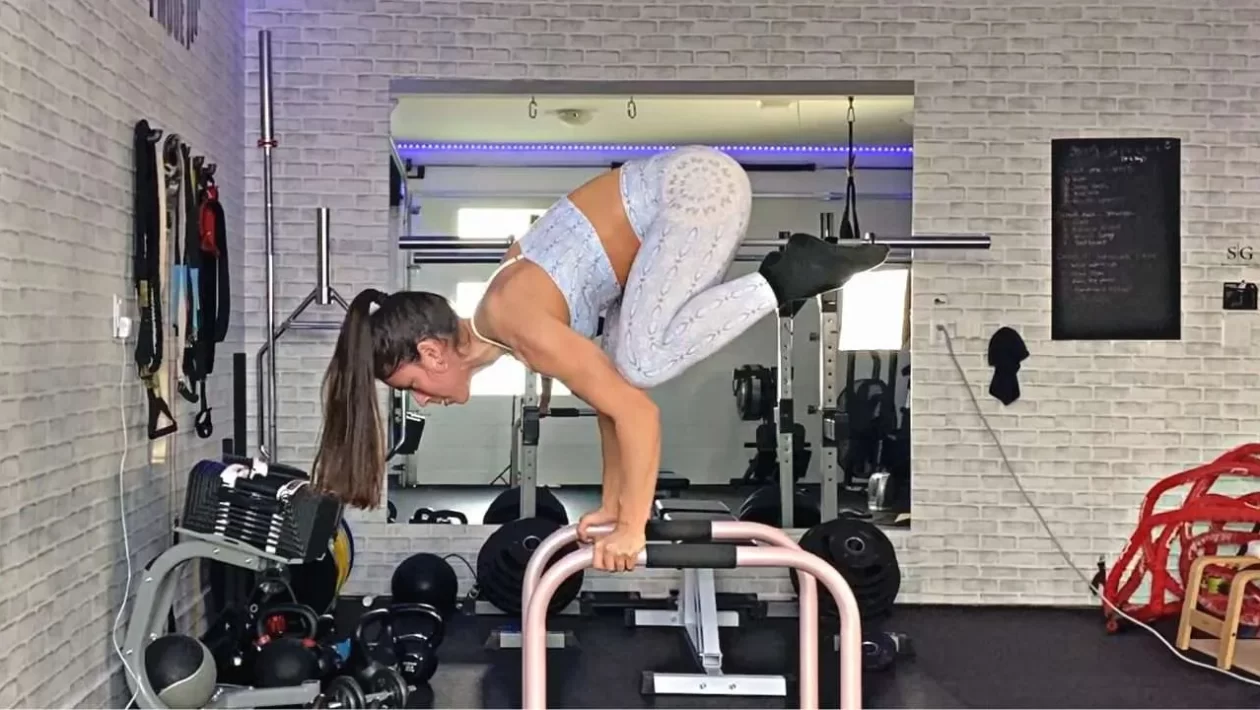Calisthenics, also known as bodyweight training, has gained immense popularity in recent years due to its effectiveness in building strength, flexibility, and overall fitness. One of the essential tools in a calisthenics enthusiast’s arsenal is the dip bar. While often overlooked, dip bar training offers a myriad of benefits that can significantly enhance your calisthenics skill. In this blog post, we will explore how dip bar training can improve your calisthenics abilities and help you reach new heights in your fitness journey.
Table of Contents
Strengthening the Upper Body
Dip bars are renowned for their ability to target and develop the muscles in your upper body. By engaging in dip bar exercises, such as dips and muscle-ups, you can effectively strengthen your chest, shoulders, triceps, and back muscles. These exercises activate multiple muscle groups simultaneously, promoting balanced muscle development and improving overall upper body strength. As you progress, you can increase the intensity by adding weight or performing more challenging variations, allowing for continuous growth and improved calisthenics performance.
Enhancing Core Stability
Effective calisthenics movements require a strong and stable core and abs. The dip bar provides an excellent platform for enhancing core stability. When performing exercises like leg raises and knee tucks on the dip bars, you engage your abdominal muscles, obliques, and lower back, creating a solid foundation for more advanced movements. Strengthening your core through dip bar training not only improves your balance and coordination but also enhances your overall body control and performance in various calisthenics exercises.
Improving Joint Strength and Mobility
Dip bar training is a joint-friendly form of exercise that helps improve joint strength and mobility. Regular practice of dips and other dip bar exercises stimulates the muscles around the shoulders, elbows, and wrists, providing stability and strengthening the connective tissues. Over time, this can help reduce the risk of injuries and enhance joint flexibility, allowing you to perform more complex calisthenics movements with greater ease and efficiency.
Progressing towards Advanced Skills
Mastering advanced calisthenics skills like the muscle-up, front lever, and handstand push-up requires a solid foundation of strength and technique. Dip bar training serves as an excellent stepping stone towards achieving these feats. By gradually increasing the intensity and difficulty of your dip bar exercises, you can build the necessary strength, stability, and body control required for advanced movements. The progressive nature of dip bar training allows you to track your progress, set achievable goals, and continuously challenge yourself, ensuring consistent improvement in your calisthenics skill set.
Improving Grip Strength
Grip strength plays a vital role in calisthenics exercises, as it enables you to maintain a secure hold on the bar during various movements. Dip bar training is an effective way to enhance your grip strength. Exercises like hanging leg raises and L-sit holds require a considerable amount of grip strength, leading to improved forearm and hand muscles. Strengthening your grip through dip bar training not only facilitates better performance in calisthenics but also carries over to other activities, such as weightlifting and rock climbing.
Conclusion
Dip bar training offers numerous benefits that can significantly enhance your calisthenics skills. From strengthening the upper body and improving core stability to enhancing joint strength and progressing towards advanced skills, the dip bar is a versatile tool that can take your calisthenics training to the next level. By incorporating dip bar exercises into your routine and consistently challenging yourself
you can unlock new levels of strength, flexibility, and body control. Moreover, dip bar training promotes overall fitness by engaging multiple muscle groups and improving joint health.
Remember, consistency and proper form are key when incorporating dip bar exercises into your calisthenics routine. Start with the basic exercises, such as dips and leg raises, and gradually progress to more challenging variations as your strength and skill improve. Always prioritize safety and listen to your body to avoid overexertion or injury.
In addition to dip bar training, it’s essential to maintain a well-rounded calisthenics routine that includes exercises targeting different muscle groups. Combining dips with exercises like push-ups, pull-ups, squats, and planks can lead to a balanced and comprehensive training regimen.
To maximize your progress, consider incorporating other calisthenics training principles such as progressive overload, where you gradually increase the difficulty or intensity of your exercises over time. This can be achieved by adding weights, using resistance bands, or attempting more challenging variations of dip bar exercises.
Furthermore, complementing your dip bar training with proper nutrition and recovery practices will optimize your results. Ensure you consume a well-balanced diet rich in lean protein, complex carbohydrates, and healthy fats to support muscle growth and repair. Get enough rest and sleep to allow your body to recover and adapt to the demands of your training.
Lastly, enjoy the process and celebrate your achievements along the way. Calisthenics is a journey that requires patience and perseverance. Set realistic goals, track your progress, and acknowledge the improvements you make. Remember that everyone’s fitness journey is unique, and progress may come at different paces for different individuals.





